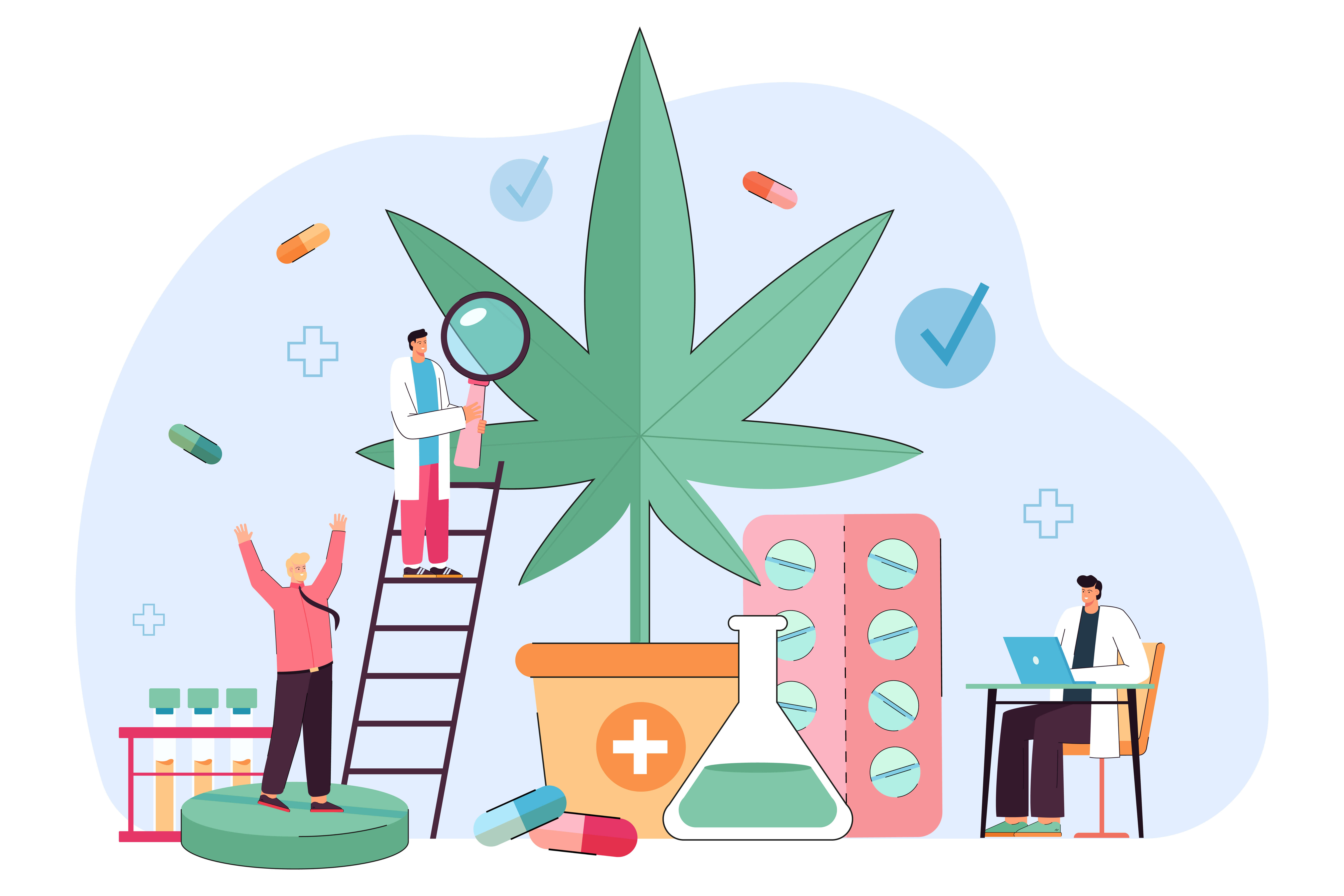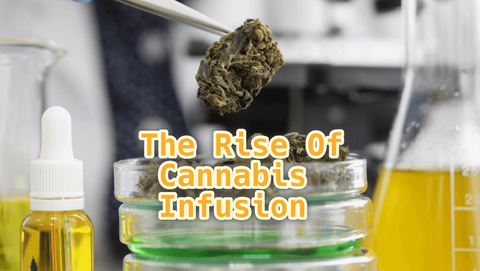Latest Blog Posts
Top rated

The Evolution of Cannabis Research in Modern Times
Over the past few decades, there has been a surge of research on cannabis and its unique properties. This is likely due to medical marijuana being approved in many countries, and the interest in medical marijuana is gaining popularity.
It can be challenging for those who have never seen or heard of cannabis before to know what is a cannabis strain, what type of cannabis, and its effects. This article will explain this by incorporating the plant’s key characteristics (Sativa vs. Indica), terpenes (essential oils), and a brief history of cannabis research.
The Birth of Medical Cannabis Research
Cannabis has been around for thousands of years. It has been cultivated in various parts of the world. There are many plant variations, and each type of cannabis has its properties. But much of today's news is still how cannabis affects people’s health and well-being.
Many countries have laws against cannabis, so it is illegal to grow, buy, or use it without a license. It is difficult to obtain and expensive to maintain so all cultivation can be illegal. Still, many people want a more natural alternative to smoking or consuming tobacco products to avoid strict laws and regulations, even if they can’t legally smoke or grow marijuana.
Cannabis rarely comes up in conversations about medical marijuana. However, recent studies have suggested that cannabis can be used as an effective treatment for several medical conditions, including some form of cancer; multiple sclerosis; Parkinson’s disease; ADD/ADHD; chronic pain due to injuries and illnesses such as arthritis or cancer; as well as post-traumatic stress disorder (PTSD).
With the legalization of medical marijuana in Canada and New South Wales, Australia, people no longer need to engage with black market sources like Mexico, where weed is sold illegally due to low quality and potency levels. Moreover, smaller amounts of THC (the ingredient responsible for getting users high) are now allowed under state laws that allow this practice, such as California and Massachusetts.
A recent study published by The Journal of Clinical Psychiatry found that patients diagnosed with a motor vehicle accident who were prescribed cannabis oil showed significant improvements on measures related to mood/anxiety scores compared with controls treated with placebo (pain medication).
In contrast, another study found that people taking synthetic cannabinoids experienced more significant improvements than those taking a placebo when assessing symptoms such as depression. However, these studies highlight that medical marijuana may be more helpful for some patients with certain health conditions rather than others.
Why is it so Hard to Conduct Research on Cannabis?
Science is the driving force of change in the cannabis world. The research landscape is a focal point of progress, and progress has been made, but not by governments or the scientists themselves.
The cannabis plant is one of nature’s most complex creatures and one of the most mysterious. Historically, humans have used it for both medicinal and recreational purposes. Many people use it for recreational purposes and pain relief in modern times. The THC-CBD ratio in cannabis is as diverse as its raw material, meaning that even a single strain can contain hundreds of different compounds.
Today, the medical and recreational marijuana industries are booming, with new products being created every day using these various cannabinoids (the active ingredients in cannabis) to treat multiple ailments from anxiety to cancer and everything else.
Due to this vast array of THC-CBD ratios available, the medical community has struggled with how to correctly classify these strains based on their actual content within them (for example, CBD levels). This can lead to some confusion when comparing different products side by side or when trying to find specific strains that are available online.
When looking at this problem from an academic standpoint, two main approaches have been used:
1) Go through each strain individually and find which ones effectively treat specific conditions (such as anxiety), then classify those strains accordingly based on their unique chemical profiles.
2) Use statistical algorithms to more easily compare strains side-by-side and determine which ones contain differing amounts of THC-CBD content.
For decades, researchers around the world have been trying to solve this problem with method #1 or method #2; however, marijuana research has never been considered anything more than an academic curiosity until recently, thanks to two recent developments: Cannabis Legalization, the legalization of cannabis in some states of United States (including California) since 1996; and Marijuana Research, launched by Professor Robert Gagnon of McGill University in 2012.
The first development was driven by several positive steps taken by governments around the world: Canada legalized cannabis for recreational purposes throughout Canada from October 2014; Australia legalized medical marijuana from December 2016; Uruguay legalized marijuana for both medical and recreational purposes starting December 2013, and Mexico legalized its cannabis market for medical use in July 2016.
The Future of Medical Cannabis Research
Cannabis is a plant with cannabinoids. There are different strains of cannabis, and they all have other effects on the body. Cannabis is a drug that has medicinal uses, and it can be smoked, dried, and made into edibles (strawberries, chocolate, cookies, cakes, etc.).
Cannabis is used for treating chronic pain, muscles spasms, anxiety, nausea/vomiting, chemotherapy side effects such as depression and seizures. It can also treat inflammation of the skin, gouty arthritis, glaucoma, and asthma.
It is being researched to treat depression and schizophrenia in young patients. Cannabis has been shown to affect moods, perceptions, and sleeping patterns; to affect appetite so that people who do not eat or drink will be less likely to feel hungry. It has also been shown to affect the brain’s system. It normally responds when people are under stress by increasing the levels of GABA (an important neurotransmitter) in their brains.
Cannabis is an attractive plant because it looks like a cross between cannabis sativa (aka marijuana) and cannabis indica (aka weed). Both plants are closely related but differ slightly by the shape of their lance-shaped leaves rather than fan-shaped as in marijuana sativa plants which grow broad leaves with long tendrils attached at their bases.
The ‘lancé’ style leaves look pretty similar to those of wheatgrass plants which were thought to cause cancer by causing cancer cells to become more resistant to chemotherapy treatments such as radiation therapy or chemotherapy drugs than normal cells, which might kill them due to the sensitivity, these cells had developed against cytotoxic medications.
The Bottom Line
Within the last few years, it has become increasingly evident that there are many different cannabis strains — with numerous subspecies of THC and CBD — and this is not just a matter of growing techniques. With so much variability, it is hard for us to keep track of which strain best suits our needs.
The result is that the sheer number of varieties available often ruins strain classification systems. This can make it challenging to know which cannabis strain will work best for any given purpose.
One problem is that some strains have been bred to affect a specific medical condition or symptom, while others have a more general impact on an individual. For example, It is well-known that indica strains are generally effective at treating anxiety symptoms, while sativa strains are known to be effective in treating depression symptoms. And yet there is no simple way of distinguishing between these two types of strains when choosing between them for any given purpose.
Disclaimer: This material is for informational purposes only and should not be relied on for legal, medical, financial, or any other form of professional advice.















